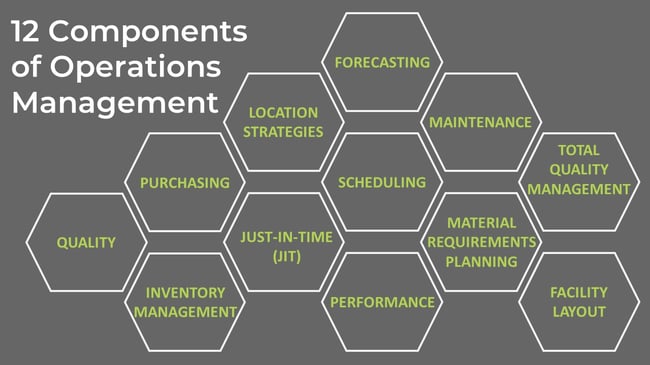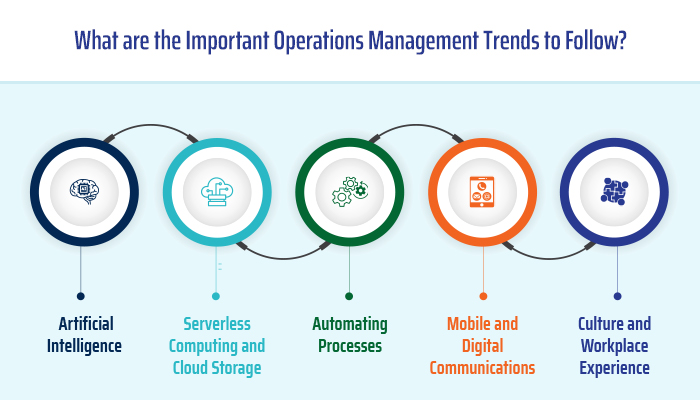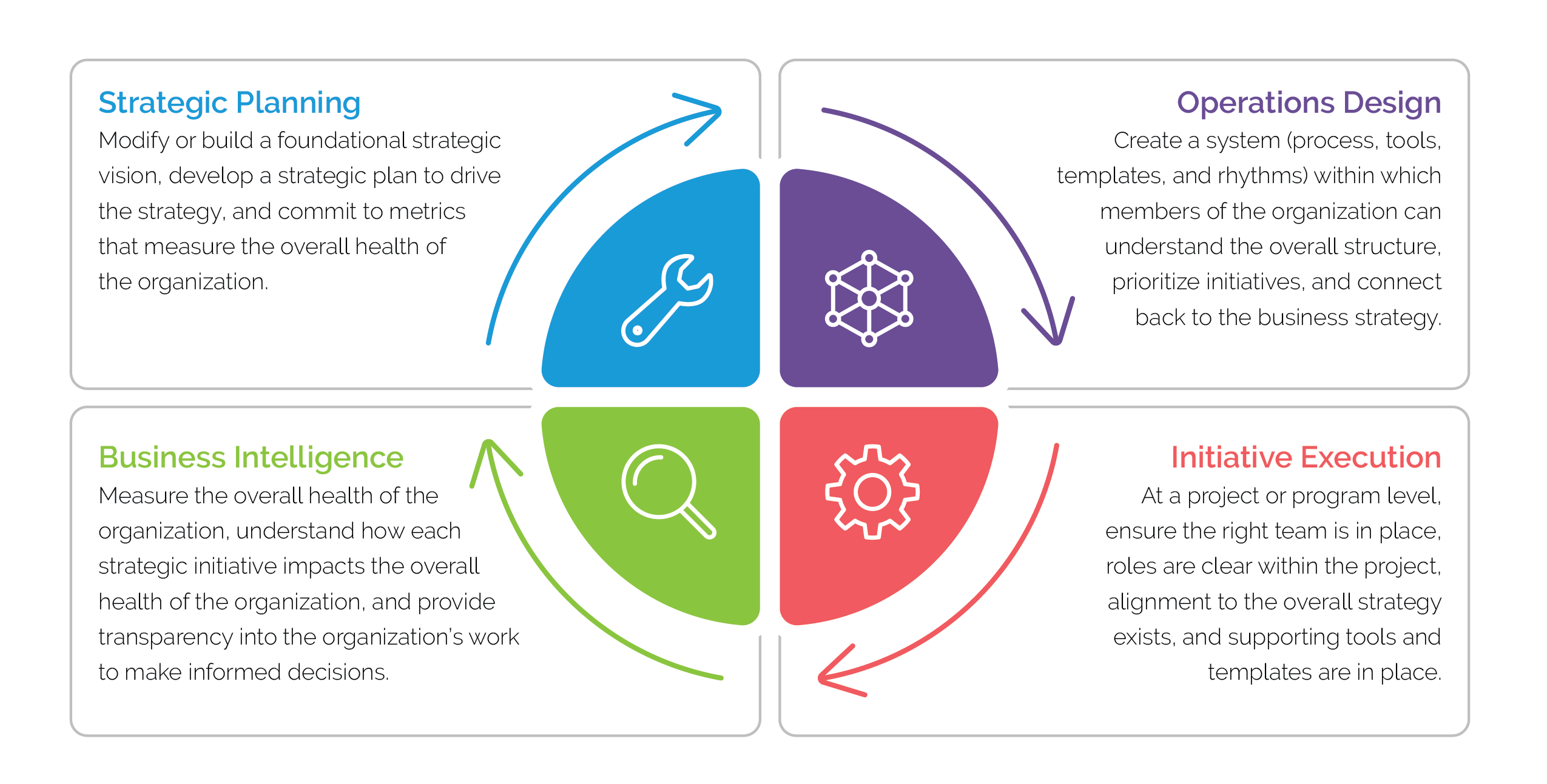
Operations Management (OM) specialists are the go-to experts when it comes to implementing and managing business processes and procedures, from the production of goods and delivery of services to their sale or distribution. Although they do not actually make any part of the finished product, OM specialists have a major influence on the success or failure of products and services through their work in operations. You don’t have to be an OM specialist to understand the importance of this role, however; everyone has experienced the impact that good or bad operations management can have on his or her company’s bottom line, whether directly or indirectly.
What is OM?

Operations management is the process of organizing, controlling and supervising the production of goods and services. It includes the management of labor, materials, machines and profit. Operations management has evolved over the years as a result of advances in technology and changes in the business environment. Today, it is an essential part of any successful business.
One way to understand operations management is to break it down into four basic areas: labor, material, machines and profit. Labor encompasses every person involved in your business’s operations, from staff to suppliers. Material is anything you purchase or sell—from parts and raw materials to inventory and shipping supplies. Machines are tools like computers and production equipment. Profit simply refers to how much money you make as a result of these activities. It can be represented as gross profit or net profit depending on how much has been spent at each stage of production.
Key Components of OM

In order to run a successful business, there are several key components of operations management that must be taken into consideration. These include:
- forecasting and demand planning;
- capacity planning and scheduling;
- inventory management;
- quality control;
- project management;
- supply chain management; and
- customer service and support.
Each of these components is essential in running a smooth and efficient operation, and when managed effectively can lead to a successful business. Forecasting and demand planning allows the company to identify and plan for future needs based on past performance. Capacity planning determines how much of each resource the company will need in order to meet demands. Inventory management ensures that the correct amount of products are available at all times, with an emphasis on making sure the items customers want most remain available. Quality control makes sure the products being manufactured adhere to standards set by both internal policies as well as regulatory bodies such as the FDA or EPA. Project management helps managers stay organized by breaking down projects into smaller tasks which can then be assigned individual deadlines or resources for completion.
Modern OM Tools

Operations management is the backbone of any successful business. It is responsible for ensuring that all aspects of the business run smoothly and efficiently. To do this, operations managers use a variety of tools, including but not limited to:
- Project management software: This helps OM track deadlines, budget, and progress on various projects.
- Inventory management software: This ensures that the company always has enough raw materials and finished products on hand to meet customer demand.
- Supply chain management software: This helps OM keep track of suppliers, orders, and shipments to ensure that everything arrives on time and in good condition.
- Business intelligence software: This allows OM to find trends and discover new ways to improve processes and save money.
Some of these tools can even be integrated with other systems, such as enterprise resource planning software or customer relationship management software. Business intelligence software is typically used to measure operational performance through tools like scorecards and dashboards. An operations manager without some kind of analysis tool is essentially flying blind—they’re not being informed about their company’s weaknesses or best opportunities for improvement so they can make better decisions.
Why is OM important in today’s age?

Operations management is important in today’s age for a variety of reasons. First, it helps businesses to be more efficient and effective in their use of resources. Second, it can help to improve customer satisfaction by ensuring that products and services are delivered on time and meet quality standards. Third, it can help to reduce costs by identifying and eliminating waste and inefficiencies in the production process. Fourth, it can help to improve employee morale and motivation by ensuring that working conditions are safe and fair. Fifth, it can help to increase sales and profits by improving the quality of products and services and by increasing efficiency. Finally, operations management is important because it is a critical part of the overall management of a company and its resources.
If operations management is so important, why is it not given more attention in today’s businesses? There are several reasons. First, many companies assume that their internal processes are efficient and effective and do not believe they need to be improved. Second, managing operations can be perceived as a technical activity that is best left to experts such as engineers or accountants. Third, inefficiencies can exist even when they are not immediately obvious. Sometimes an operation may seem perfectly fine from a superficial level; however, if you dig deeper you might find problems such as faulty work instructions or inefficient workflows causing workers to make unnecessary movements.
How can companies implement OM?

Operations management is critical to the success of any business. It is the process of planning, organizing, directing, and controlling the resources needed to produce a company’s goods or services.
There are many ways that companies can implement OM, but some of the most common methods include using quality control tools, creating efficient workflows, and utilizing data-driven decision making. Quality control tools help ensure that products or services meet customer expectations. Creating efficient workflows helps reduce waste and increase productivity. And utilizing data-driven decision making helps ensure that decisions are based on accurate information.
Businesses can use a wide variety of tools to meet their OM goals. First, they can utilize statistical analysis and data visualization software to collect, organize, and interpret data. Second, they can measure efficiency by determining key performance indicators (KPIs). Key performance indicators are numbers that businesses compare with internal benchmarks or industry standards. For example, a company could calculate its cost per unit as a KPI, then use that number to evaluate productivity throughout all departments in order to reduce costs.